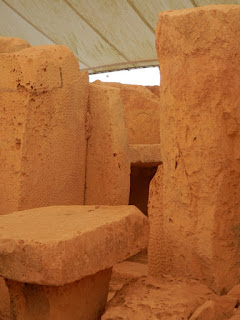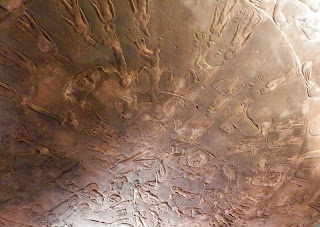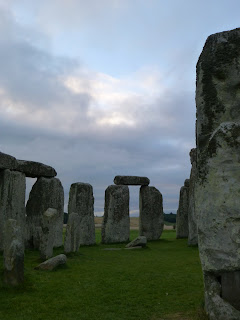Ceremony and Sacred Sites
 |
| Altars at Hagar Qim |
Malta is a sacred land with a history of devout peoples. According to Wikipedia, there is a total of 359 churches (313 in Malta and 46 in Gozo); almost one for every day of the year, and a density of "slightly more than 1 church per square kilometer"! The descendents of the Temple Builders remain a religious and observant people. Many of the Catholic churches on Malta and Gozo are masterpieces of art and architecture, places of miraculous healings, stories of survival beyond natural odds, and energetically active places. I believe there is a grid of ley lines that one may tap into on the Maltese islands; a web of the divine. From a historical perspective, religious sentiment and the importance of ritualized ceremony held in a beautifully designed building, are still going strong; only the names have changed.
It intrigues me that the Neolithic age farmers, with few tools and little technology, decided to group their efforts to move, craft, build, fit together, and decorate huge blocks and slabs of the limestone of which the island is made. How and why did they allocate their time to this immense task, while continuing to subsist in a fairly harsh environment? Why did they devote themselves to this task for what must have been hundreds of years?
 |
| Ggantija |
 |
| Hagar Qim at top of hill |
And the mystery of who or what the people worshipped, and how they conducted their ceremonies and rituals is fascinating to me. From the artifacts recovered from the sites, it's known that some animal (but no human) sacrifices were involved, a sacrificial knife was uncovered at one temple, near an altar. It appears that there were public and private spaces within the unique apse structures of the temples; the inner recesses were only for the priests or priestesses, with public worship spaces surrounding.
 |
| Solstice light model of Mnajdra |
So, not only were the Temple Builders master architects and craftsmen, but they were astronomers and well versed in earth cycles! They were dedicated and devout and very persistent. They built places of worship out of the earth/the rock that the island is formed from. And within, small sculptures have been recovered, which point to a feminine deity.
This is what I intended to explore and experience. Fortunately, we were able to visit the Hypogeum before it was closed for restoration, but our timing was off for Tarxien, which is now being covered with a structure aimed at protecting it from weathering. I saw what I could. At every site, I tried my best to be respectful, to approach with beginner's mind, to find a piece of the energetic signature of each location.
The second evening of our tour, our group of twenty women met up at the remains of the Bubigga temple, on the grounds of the Dolmen Resort Hotel. Forming a circle, we joined together, in awe and prayerful intention, to go within--within the rocks and within our own experience--to access the long, lost Goddess and her devotees.
 |
| Goddess Light |
We were discouraged at every sacred temple site from doing anything out of the ordinary, anything that would call attention to us, or make us seem odd or strange. We could not do ceremonies there. I was so disheartened that prayer and worship, honoring and song, mantra and meaning have been banned from the very structures that were built with such love, care and gargantuan effort, to contain them. It breaks the Goddess' heart.




Comments